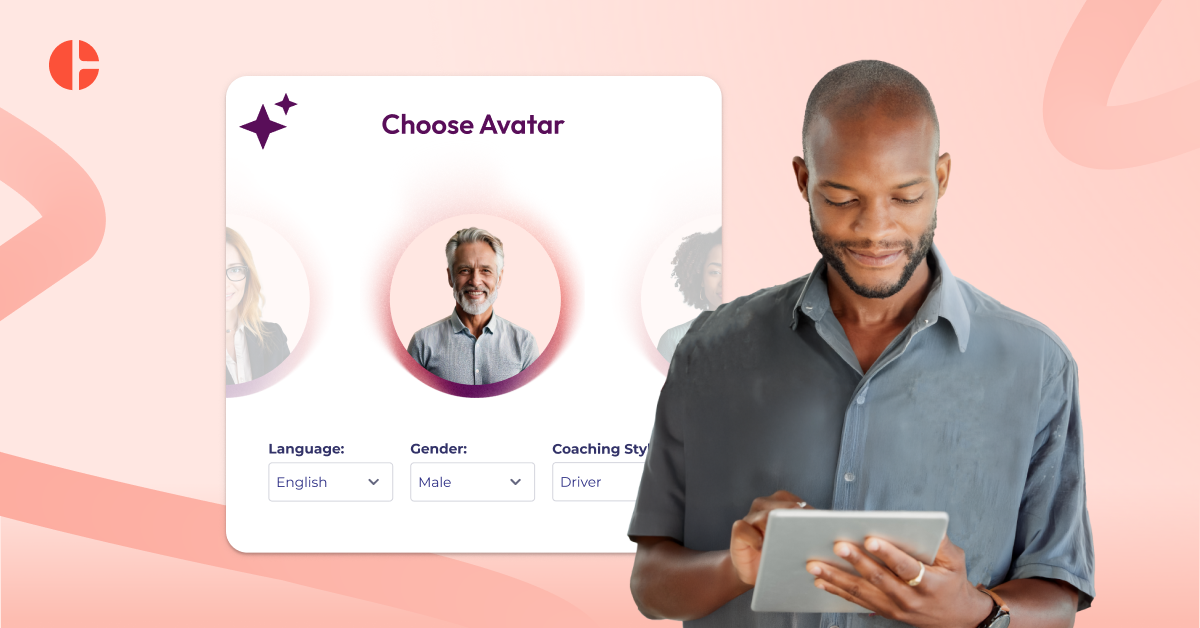Top 10 Exit Interview Questions for Invaluable Insights

Employee departures represent a juncture where both retrospection and foresight converge within an organisation. They signal the conclusion of one chapter and the opening of another, offering a dual perspective on an employee's journey. It is during these transitions that companies can tap into a goldmine of knowledge, shedding light on the inner workings of their operations, the subtleties of their organisational culture, and the unique tapestry of their former employees' experiences. The key to unveiling these concealed treasures is the practice of conducting effective exit interviews. This article serves as a beacon, illuminating the significance of exit interviews within enterprise-level organisations and, in the following sections, providing a curated list of the best exit interview questions that hold the potential to unearth invaluable insights.
The Purpose of Exit Interviews
Exit interviews play a pivotal role in the realm of human resources and talent management, serving several essential purposes:
1. Understanding Employee Departures
Companies conduct exit interviews to provide a unique window into the reasons behind employees' decisions to leave. Whether it's for career advancement opportunities, dissatisfaction with their current role, or personal reasons, these insights offer organisations a valuable opportunity to gain clarity. By comprehending the motivating factors, companies can fine-tune their talent retention strategies to better align with employee expectations and aspirations.
2. Process Improvement
Within the exit interview context, the departing employee can provide candid feedback about their experiences within the organisation. This feedback can be a goldmine for identifying pain points and areas in need of improvement within an organisation's processes, policies, or procedures. By addressing these issues, companies can streamline operations, enhance efficiency, and create a more conducive work environment.
3. Company Culture Evaluation
Exit interviews provide departing employees with an outlet to express their perspectives on the organisation's culture. These insights offer leaders a valuable opportunity to assess the alignment of their company's culture with its core values and objectives. By gaining this external perspective, organisations can make informed adjustments to their culture, ensuring that it resonates with current employees and reinforces the company's mission.
4. Knowledge Transfer
Beyond insights into departure motivations, exit interviews also facilitate the transfer of knowledge. A departing employee can share valuable expertise, insights, and best practices with their successor, ensuring that critical institutional knowledge isn't lost in the transition. This knowledge transfer can contribute to a smoother transition for new employees, reducing potential disruptions and enhancing overall continuity within the organisation.In essence, exit interviews are a multifaceted tool that not only provides insights into employee departures but also aids in process optimization, cultural alignment, employee benefits, and knowledge preservation.
Setting the Stage: Preparing for Exit Interviews
Before delving into the best exit interview questions, it's imperative to establish an environment that fosters open and honest feedback. Taking these steps can help create such an atmosphere:
Step 1: Confidentiality and Anonymity
Offer departing employees the assurance that their responses will be treated with the utmost confidentiality and, if preferred, anonymity. This not only respects their privacy but also instils the confidence to share candid insights without apprehensions regarding potential consequences.
Step 2: Trained Interviewers
It's essential to have interviewers who are well-trained in conducting exit interviews. They should possess the skills necessary to actively listen to departing employees, pose insightful follow-up questions, and maintain a non-judgmental stance throughout the conversation. This proficiency ensures that the interview process is both productive and empathetic.
Step 3: Clear Communication
Communicate the intent and significance of exit interviews effectively to departing employees. Emphasise how their feedback contributes to driving positive change within the organisation. By highlighting the transformative potential of their input, employees are more likely to engage sincerely in the process, knowing their voices can lead to meaningful improvements.
The Top 10 Exit Interview Questions
Now, let's delve into the best exit interview questions and explore why each one is crucial for gaining valuable insights.
1. "Why did you decide to leave the company?"
This foundational question aims to uncover the root cause of an employee's departure. It delves into the core motivations behind their decision and provides essential insights into retention issues. Understanding these reasons can serve as a compass for organisations, guiding them toward more effective strategies to retain valuable talent.
2. "What aspects of your role did you find most challenging?"
Identifying the specific challenges an employee faced in their role sheds light on areas where organisational support or job description modifications may be necessary. These insights enable organisations to proactively address obstacles, creating an environment where employees can thrive and contribute optimally.
3. "Were your career goals and expectations met during your time here?"
This question assesses the alignment between the promises made by the organisation and the employee's experiences. It's a crucial barometer of clear communication and alignment. Discrepancies unearthed through this question offer organisations the opportunity to refine their messaging and ensure that employees' career aspirations align with the company's trajectory.
4. "How would you describe the work environment and company culture?"
The work environment and company culture are pivotal factors influencing employee morale and job satisfaction. This question provides a direct window into employees' perceptions, offering organisations valuable insights for evaluating and enhancing workplace dynamics. Addressing issues revealed through this question can lead to a more positive and engaging work environment.
5. "Did you receive sufficient feedback and opportunities for professional development?"
Effectiveness in providing feedback and professional growth opportunities is critical for employee development. By asking this question, organisations can gauge their feedback mechanisms and growth initiatives, which in turn helps in tailoring effective development programs that resonate with employee needs.
6. "Were there any specific incidents or issues that contributed to your decision to leave?"
This question invites departing employees to pinpoint specific incidents or issues that played a role in their departure. Exploring these instances uncovers problem areas requiring immediate attention, enabling organisations to make targeted improvements and prevent similar issues in the future.
7. "What suggestions do you have for improving the employee experience?"
Employees often possess valuable insights into how the workplace can be enhanced. By soliciting their suggestions, organisations empower employees to share constructive feedback, paving the way for continuous improvement and a more enriched employee experience.
8. "Did you feel your contributions were recognized and appreciated?"
Acknowledging and appreciating employee contributions are integral to maintaining morale and motivation. Insights gathered through this question can guide efforts to enhance recognition programs, reinforcing a company culture that values and celebrates employees' efforts.
9. "How would you rate your relationship with your immediate supervisor and colleagues?"
The quality of relationships within the organisation significantly influences an employee's decision to stay or leave. This question provides a direct assessment of these relationships, offering organisations an opportunity to address any interpersonal challenges and foster a more harmonious and collaborative workplace.
10. "What advice would you give to your replacement?"
This question allows departing employees to share their experiences and provide practical guidance to their successors. It serves as a valuable knowledge transfer mechanism, helping current and future employees navigate their roles more effectively and ensuring continuity in operations.Integrating these thoughtfully crafted exit interview questions into the exit interview process can be transformative for organisations. They have the power to unveil a wealth of invaluable insights that extend far beyond understanding the departure of individual employees. These insights become catalysts for positive change, enabling organisations to refine their talent retention strategies, address operational inefficiencies, and foster a workplace culture that resonates with their core values. Simultaneously, the careful consideration of these exit interview questions ensures a smooth and constructive transition for departing employees, enabling them to share their experiences and wisdom with their successors. In this synergy of introspection and knowledge transfer, exit interviews become a cornerstone of organisational growth and employee engagement, ultimately paving the way for a brighter and more resilient future.
Analysing and Utilising the Insights
Collecting exit interview data marks the initial step in a more comprehensive journey towards organisational improvement. To fully unlock the potential of these insights, organisations must establish an effective analysis process. Following the collection of feedback, HR professionals and organisational leaders should embark on the following strategic steps:
Step 1: Aggregate and Analyse Data
Once exit interview feedback is gathered, it's crucial to compile and organize responses systematically. Look for recurring themes or patterns within the data, as these often hold the key to deeper insights. Leveraging data visualisation tools can be particularly effective in presenting findings in a clear and understandable manner, making it easier for stakeholders to grasp essential trends.
Step 2: Create Actionable Plans
The insights gleaned from exit interview questions often reveal critical issues that demand attention. It's essential to identify these issues and involve relevant stakeholders in developing action plans. These plans should be specific, measurable, and time-bound, ensuring that objectives are well-defined and achievable. Proper resource allocation and the establishment of clear timelines are integral components of this phase, as they facilitate the effective execution of strategies aimed at addressing identified challenges.
Step 3: Monitor Progress
The journey towards organisational improvement doesn't conclude with the formulation of action plans; it necessitates a commitment to ongoing monitoring and adaptation. Tracking Key Performance Indicators (KPIs) aligned with the goals of each action plan provides quantifiable benchmarks for measuring success. Regular review meetings with stakeholders serve as platforms for assessing progress, sharing insights, and addressing challenges. In addition, maintaining open channels for ongoing feedback collection allows organisations to make data-driven decisions, pivot when necessary, and sustain momentum. Celebrating achievements and milestones along the way is equally important, as it can improve employee morale, reaffirms the value of employee feedback, and underscores the organisation's commitment to positive change.
Common Pitfalls to Avoid
Navigating the path of conducting effective exit interviews is not without its challenges, and organisations must be aware of common pitfalls that can potentially undermine their effectiveness. These pitfalls include:
Neglecting Follow-Up
The true value of exit interviews lies not only in collecting valuable feedback but in taking meaningful action based on that feedback. Failing to follow up on exit interview feedback and initiate tangible steps for improvement can erode trust within the organisation. It may leave departing employees feeling that their input was merely a formality and that their concerns or suggestions are falling on deaf ears. This erosion of trust can deter future employees from providing candid responses during exit interviews, thereby diminishing the primary purpose of these valuable conversations. It is vital, therefore, to demonstrate a commitment to taking action based on negative feedback, ensuring that departing employees perceive their input as genuinely valuable and actionable.
Lack of Standardization
Inconsistencies in the exit interview process, such as variations in questionnaires or the approach of interviewers, can result in unreliable data. Without standardised exit interview questions, it becomes challenging to draw meaningful comparisons and derive insights from the collected data. A lack of consistency can lead to data that lacks coherence and clarity, making it difficult for organisations to identify trends or patterns. To ensure that exit interviews yield a reliable dataset that can inform decisions, it is imperative to establish and maintain standardised procedures and questionnaires. This consistency not only facilitates more effective analysis but also enhances the organisation's ability to make informed decisions based on the wealth of data collected.
Defensiveness
Responding defensively to honest feedback during exit interviews can inadvertently discourage honesty from departing employees. When employees perceive defensiveness from interviewers or the organisation, they may be less inclined to share candid insights or provide constructive feedback. Creating a non-judgmental and open environment during exit interviews is paramount to encourage departing employees to openly share their thoughts and experiences. By fostering an atmosphere of receptivity, organisations can ensure that the employee feedback collected is honest, valuable, and provides a true reflection of employee sentiments. This, in turn, equips organisations with the insights needed to make meaningful improvements and enhance employee experiences.Recognizing and avoiding these common pitfalls is instrumental in conducting exit interviews that yield valuable insights and contribute to organisational growth and improvement.
Leveraging Digital Coaching for Enhanced Exit Interviews
In today's digital landscape, organisations have access to a wide array of technological resources that can augment their HR practices, including exit interviews. One such resource gaining prominence is digital coaching. Digital coaching offers a dynamic and agile approach to employee engagement and development, and they can be particularly valuable when integrated into the exit interview process.
1. Personalised Guidance for Departing Employees
Digital coaching platforms can provide personalised guidance and support to departing employees during the exit interview process. By leveraging our coaching solutions, employees can receive tailored advice and resources to navigate the transition more effectively. This personalised approach not only helps departing employees feel valued but also ensures they have access to the tools and information they need to make a smooth exit.
2. Preparing for Exit Interviews
Digital coaching can assist departing employees in preparing for their exit interviews. These platforms can offer guidance on how to constructively communicate feedback, frame their experiences, and provide actionable insights. This preparation not only empowers employees to share their thoughts more effectively but also ensures that the feedback they provide is structured and valuable to the organisation.
3. Continuous Learning and Improvement
Digital coaching is not limited to the exit interview itself. Organisations can utilise these platforms to facilitate continuous learning and improvement. By offering departing employees access to resources and content related to their career goals or skills development, organisations can maintain a positive connection even after an employee has left. This not only fosters goodwill but also ensures that the organisation remains a valuable resource for former employees, potentially leading to future collaboration or rehiring.Incorporating digital coaching into the exit interview process represents a forward-looking approach to employee offboarding. It not only enhances the experience for departing employees but also equips organisations with valuable data and tools to continually improve their retention strategies and overall HR practices. As the digital coaching landscape continues to evolve, its potential to optimise exit interviews and employee transitions remains a compelling proposition for forward-thinking organisations.
Conclusion
Exit interviews are powerful tools for organisations looking to gain valuable insights into employee departures and improve their talent management strategies. By asking the right exit interview questions and creating a supportive environment, companies can obtain candid feedback that drives positive change, enhances employee retention, and fosters a company culture of continuous improvement. Implementing these best practices can transform farewells into opportunities for growth and development.
FAQ
Yes, executive coaching plays a key role in retaining and engaging senior leaders by giving them space to reflect, grow, and lead with purpose. Through individualised support, executives strengthen communication, decision-making and resilience — all of which drive engagement and long-term satisfaction.
With CoachHub Executive™, organisations not only see improved leadership performance but also greater alignment, motivation and confidence among their top talent, resulting in higher retention and a stronger leadership pipeline.
CoachHub Executive™ goes beyond one-to-one sessions by integrating technology, measurable insights and continuous learning into every coaching journey. Each executive benefits from personalised matching with certified coaches and flexible session formats to reinforce development between sessions.
While traditional coaching often lacks scalability or measurable tracking, CoachHub ensures impact visibility through data-driven dashboards, 24/7 scheduling flexibility and a consistent, high-quality experience for leaders worldwide, that can be tailored to your organisation's goals.
Yes, executive coaching is delivered across 90 countries in 40+ languages, with localised coach networks that meet the cultural and business needs of global organisations.




.svg)


.svg)





.png)



